
Academic research is becoming more internationally focused than ever before, providing N8 universities with huge benefits, but also new challenges.
Research is a truly global endeavour, with ideas and studies transcending borders. The opportunities for international research have increased enormously over the past 15 years. From sharing specialised equipment to developing new research areas and ideas, or utilising new sources of funding, many researchers are seeking new opportunities for research around the world.
For many projects, working internationally is the only way to carry out quality research that may require multinational resources, providing large infrastructure and increasing affordability of major studies.
The N8 universities are world-leading, all are ranked in the top 30 in the UK, with three universities also ranked in the global top 15 for research impact.
Here, as part of the N8’s 15th Anniversary celebrations, we’ve identified some of the most notable recent international research collaborations and work by the N8 universities. These projects are varied and wide-ranging, crossing continents and producing ground breaking research that may not have been possible without an international collaborative approach.

Durham University is leading the way on Decarbonising Heat, having recently won funding for three major new projects. The Durham Energy Institute projects will develop new technology and processes to decarbonise heating and cooling across residential, business and industry sectors, to significantly reduce UK greenhouse gas emissions.
They will lead the £1.16 million international research and innovation network on behalf of UKRI which will bringing together researchers, technology developers, managers, and policy makers to facilitate learning, share progress and new knowledge, and to fund new research projects for decarbonising heating and cooling.
A wide range of universities, industrial bodies and governance organisations are also partners in the project including BEIS, Energy Systems Catapult, European Energy Research Alliance, Durham County Council, GE (General Electric Company), E.ON Energy Solutions Ltd, North East Process Industry Cluster (NEPIC), Narec Distributed Energy.

Durham University researchers are also helping to build some of the world’s most powerful new telescopes to further our exploration of space. Their astronomers and cosmologists are also involved in major international projects that will hunt two of the universe’s most mysterious ingredients – dark matter and dark energy – and investigate how the universe formed.
The team have helped build components for NASA’s new James Webb Space Telescope (JWST) – the successor to Hubble – which will launch in October 2021, and Durham University astronomers will use the JWST to hunt for dark matter and investigate early galaxy formation.
They are also involved in the development of the HARMONI instrument for the new European Extremely Large Telescope (E ELT) currently under construction in the Atacama Desert in Chile.
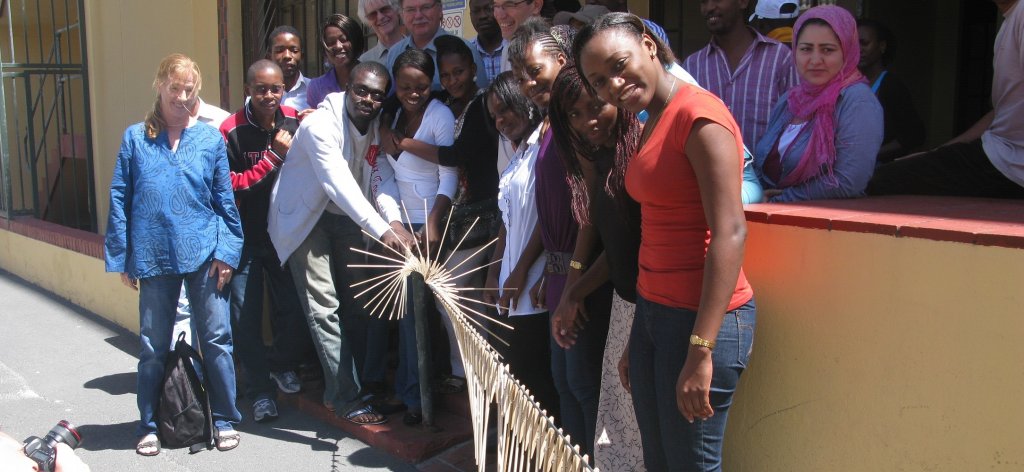
Durham have also formed a partnership with the African Institute for Mathematical Sciences (AIMS) to support their outstanding work across the continent.
AIMS and the Next Einstein Initiative is a pan-African network of centres of excellence enabling Africa’s talented students to enhance their scientific foundation in order to drive the continent’s scientific, educational and economic self-sufficiency. Delivering post-graduate training, research and public engagement in Mathematics-related disciplines.
Durham’s Department of Mathematical Sciences has been involved with AIMS since soon after its foundation in 2003, alongside other leading academics from North America and Europe.
Operating in South Africa, Cameroon, Senegal, Rwanda, Ghana and Tanzania, all students are fully funded through donors, industry and the States in which the Centres are located. AIMS has attracted considerable international funding, both from international corporate partners such as Google, Barclays, Vodacom and Petro-SA, Universities and from government bodies such as DfID (UK) and IDRC (Canada).
Drawing on expertise across the biological, chemical and physical sciences, the Durham Centre for Global Infectious Disease seeks to develop collaborative efforts for the identification and inhibition of novel antimicrobial targets, ultimately leading towards the development of novel therapies.
As part of this effort, Durham University currently lead on the MRC GCRF Global Network for Neglected Tropical Diseases (NTD Network) (https://ntd-network.org) which focuses on the validation of new drug targets for Chagas disease and leishmaniasis.
The NTD Network aims to deliver a multidisciplinary, collaborative research initiative to identify new in-parasite drug targets for these diseases, as well as training Ph.D. students and early career researchers around the world with the vital and specialised skills needed for this work. They also aim to build capacity worldwide through knowledge transfer across the Network and assisting with enhancing research infrastructure at partner institutions in developing countries.

Lancaster University have similar international collaborative projects, including an innovative study focusing on Malawian women’s perceptions of fertility difficulties.
Recent research from Lancaster University recently showed that women in Malawi who reported difficulties conceiving and/or carrying a child to term turned to traditional healers, churches and mosques, as well as medical clinics.
The study looks at women’s own assessments of their ability to conceive and carry a pregnancy to term – that is, self-identified infertility – in Malawi. Dr Jasmine Fledderjohann’s research ‘Self-reported Fertility Impairments and Help-Seeking Strategies Among Young Women in Malawi’ was published in the Global Public Health Journal.
“This study is innovative because it focuses on women’s own perceptions of fertility impairments, rather than measures based on women’s fertility histories,” said Dr Fledderjohann.

Another international project involving Lancaster University exposed big differences amongst Amazonian countries in their rates of forest recovery as well as deforestation.
The study by an international team of researchers from the UK and Brazil revealed that the regions with the greatest potential for large-scale forest recovery – those that have undergone the most extensive deforestation – currently have the lowest levels of recovery. These highly deforested Amazonian landscapes also show no sign of recovering even 20 years after the forest was cleared.
Charlotte Smith, a PhD researcher at Lancaster University and lead author of the study, said: “Research in the Amazon typically focuses on Brazil because it holds most of the forest. But there are eight other Amazonian countries. Understanding how forest recovery differs between countries can help us understand which countries’ policies are helping to maintain the forest carbon sink, and which ones aren’t.”

Another environmental study around the high concentrations of ‘forever’ chemicals being released from ice melt into the Arctic Ocean was carried out by Lancaster University. Their ground breaking research found ‘elevated’ levels of toxic chemicals involved in the manufacture of items from stain proof school uniforms to non-stick pans, in the remote Arctic.
Known as ‘forever’ chemicals due to the fact they do not break down in the environment, poly- and perfluoroalkyl substances (PFAS) are used in a wide range of products and processes from fire proofing to stain resistant surfaces.
The Lancaster University study has found them in the surface seawater close to melting Arctic ice floes at concentrations of up to two times higher than levels observed in the North Sea, even though the region of the Barents Sea under investigation was thousands of kilometres from populated parts of Europe.
The research has shown these chemicals have travelled not by sea, but through the atmosphere, where they accumulate in Arctic Sea ice. Because Arctic ice is melting more quickly than before, these harmful chemicals are efficiently released into surrounding seawater resulting in some very high concentrations.
Lancaster’s Dr Jack Garnett and Professor Crispin Halsall along with colleagues from HZG, Germany, were investigating the long range transport and deposition of PFAS to the Arctic as part of ‘EISPAC’ – a project jointly funded by UK’s NERC and Germany’s BMBF as part of the Changing Arctic Ocean programme (https://www.changing-arctic-ocean.ac.uk/)

A team of conservation scientists lead by Lancaster University in conjunction with ZSL’s Institute of Zoology and the University of Miami Rosenstiel School of Marine and Atmospheric Science (UM), looked at the impact of tourism on tiger sharks.
The team observed the sharks in social groups near an area called Tiger Beach off the north-west side of Little Bahama bank in the Bahamas, a popular spot for tourists, revealing that tiger sharks appear to choose and form social groups – a contrast to previous understanding – but that their social preferences for each other tend to break down when they are exposed to bait provided by shark diving experiences.
This study is the first of its kind to look at the influence of bait feeding on the social behaviour of tiger sharks and says that if the frequency of tourism activity doesn’t increase, sharks could likely retain natural behaviours when not being fed and avoid dependence.
Other researchers working on the study included scientists from the University of Miami Rosenstiel School, Carleton University in Ottawa Canada, Florida International University, Beneath the Waves Inc, the South Carolina Department of Natural Resources.

An international team from Lancaster University, Delft, Nijmegen, Kiev and Salerno demonstrated a new technique to generate magnetic spin waves at nanoscale in pursuit of low energy computing. These so-called spin waves produce a lot less heat than conventional electric currents, making them promising candidates for future computation devices with significantly reduced power consumption.
The international team of researchers succeeded in creating nanometre-size coherent magnetic waves in an antiferromagnet that travel at supersonic velocities through the material. Their trick was to use ultrashort pulses of light to both create and detect these spin waves.
This work brings future spin-wave devices in antiferromagnets closer to reality. Rostislav Mikhaylovskiy from Lancaster University says: “Traditionally the antiferromagnetic materials have been considered practically useless since they do not possess magnetisation. However, very recently the unique functionalities of antiferromagnets triggered a real boom in their studies. We believe that our findings will stimulate further research into antiferromagnetic spin waves and eventually bring an antiferromagnet-based logic device into practical reach – potentially opening the door to a radical reduction in the power needed for computing.”
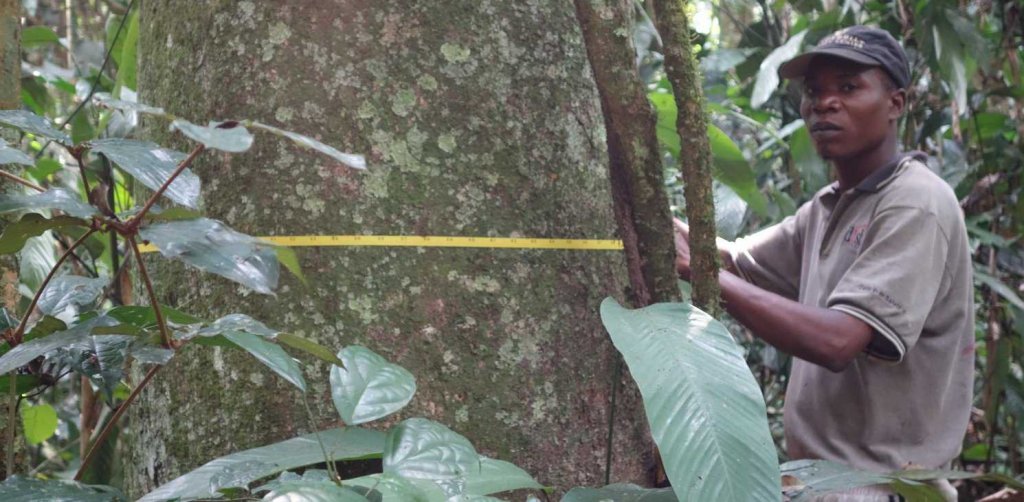
The University of Leeds have undertaken many international environmental projects, including a study in May this year that discovered that African rainforests still slowed climate change despite record heat and drought.
The scientists at the University of Leeds’ School of Geography, were studying the impact of record heat and drought on intact African tropical rainforests and were surprised by how resilient they were to the extreme conditions during the last major El Niño event. The study was carried out in collaboration with University of Yaoundé I in Cameroon.
The research, as reported in Proceedings of the National Academy of Sciences, found that intact rainforests across tropical Africa continued to remove carbon from the atmosphere before and during the 2015-2016 El Niño, despite the extreme heat and drought.
Tree measurements in long-term inventory plots in intact forest — unaffected by logging or fire — were completed just before the 2015-2016 El Niño struck. Emergency re-measurements of 46,000 trees across 100 of the plots in the Democratic Republic of the Congo, Gabon, Cameroon, Ghana, Liberia and the Republic of the Congo then allowed the researchers the first ever opportunity to directly investigate how African tropical forests would react to the hotter, drier conditions.
Senior author Professor Simon Lewis, in Leeds’ School of Geography, who led the development of the Africa-wide network of forest observations, said: “Scrambling field-teams to get to our remote rainforest sites was worth all the difficulties we faced. This is the first on-the-ground evidence of what happens when you heat and drought an intact African rainforest. What we found surprised me.
“African rainforests appear more resistant to some additional warming and drought compared to rainforests in Amazonia and Borneo.”

Leeds’ School of Biology also collaborated with International Centre of Insect Physiology and Ecology (icipe) in Kenya to develop an app to help African farmers. The app will support farmers across Africa to adopt environmentally friendly ways of protecting their crops from pests.
The mobile phone app – called Push-Pull – was launched by Agape Innovations Ltd, in collaboration with a team of scientists from the University of Leeds, Keele University and icipe.
The app is part of a larger project called ‘Scaling up Biocontrol Innovations in Africa’ funded by the Global Challenges Research Fund (GCRF), which seeks to understand how biocontrol methods have been used across Africa and to encourage their uptake. The project involves a cluster of previous GCRF-funded research programmes, including the Leeds-led AFRICAP project.
Principal Investigator Dr Steve Sait, from Leeds’ School of Biology, said: “We hope that this collaboration, and this new app, can help us extend knowledge of this technique to potentially millions of other farmers who could be benefitting from it. Compared to chemical pesticides, push-pull costs less money to the farmer, results in less damage to their crops, and it avoids harming other insect species that play valuable roles in the ecosystem.
“We consulted widely with farmers in Kenya and I’m excited to see how their contribution has made the app user friendly and could lead to more uptake of push-pull farming.”

The University of Leeds was also a key part of the team developing a low-cost, easy-to-use breathing-support device designed to cope with the surge in COVID-19 cases in low to middle income countries.
The device was developed to provide a form of oxygen therapy called CPAP or continuous positive airway pressure, which has proved effective in helping patients struggling to breathe because of moderate to severe covid.
It was developed by a team of engineers, scientists and doctors from the University of Leeds, Leeds Teaching Hospitals NHS Trust, Bradford Teaching Hospitals NHS Foundation Trust, Medical Aid International and the Mengo Hospital in Uganda.
Nikil Kapur, Professor of Applied Fluid Dynamics at the University of Leeds and the supervising academic on the project, said: “By adopting the approach of frugal innovation, we have been able to redesign an important piece of medical equipment so it can function effectively in poorer resourced healthcare settings.
“We have stripped away unnecessary complexity and ensured the device will work in settings where oxygen supplies are scarce and need to be conserved. The prototype is an important step in developing a device that will create greater access to critical-care technology and help save lives.”

A team at the University of Leeds is a key partner in the £17.7 million Water Security and Sustainable Development Hub. This international partnership of 55 organisations from 12 countries includes collaborators from Colombia, Ethiopia, India, Malaysia, as well as the Universities of Newcastle and Oxford.
These two pioneering international collaborations tackling water security and urban disaster risk management are part of an ambitious new initiative established by UK Research and Innovation (UKRI), as part of the Global Challenges Research Fund (GCRF).
The new scheme will invest £200 million across 12 global research hubs to tackle some of the world’s most pressing challenges.
A second team of Leeds researchers, from the School of Earth and Environment, will bring expertise in satellite observation of the Earth’s surface, as a key component of new Urban Disaster Risk Hub, led by the University of Edinburgh.
This £17.6 million hub will work with international agencies to strengthen risk assessment in urban areas in the face of global hazards such as earthquakes, volcanic eruptions and extreme weather which can threaten life in many cities.
The work will focus on the urban centres of Quito, Kathmandu, Nairobi and Istanbul, bringing community and government leaders together with researchers to strengthen risk decision making and the voice and capacity of the urban poor, who are often most affected by natural disasters.
Working together with local scientists, the Leeds team will use satellite radar to measure ground deformation around volcanoes and fault zones near to the cities, to detect changes indicating that an eruption or earthquake is likely.

Leeds researchers have also worked with hundreds of experts from across the world for more than three years to deliver the Intergovernmental Panel on Climate Change (IPCC) report, which examines the physical science basis of climate change.
Many of the changes they have observed in the climate are unprecedented in thousands, if not hundreds of thousands of years. Some of the changes already set in motion, such as continued sea level rise, are irreversible over hundreds to thousands of years.
But according to the report, which numbered four University of Leeds experts among its authors, strong and sustained reductions in emissions of carbon dioxide (CO2) and other greenhouse gases would limit climate change, with global temperatures stabilising within 20 to 30 years.
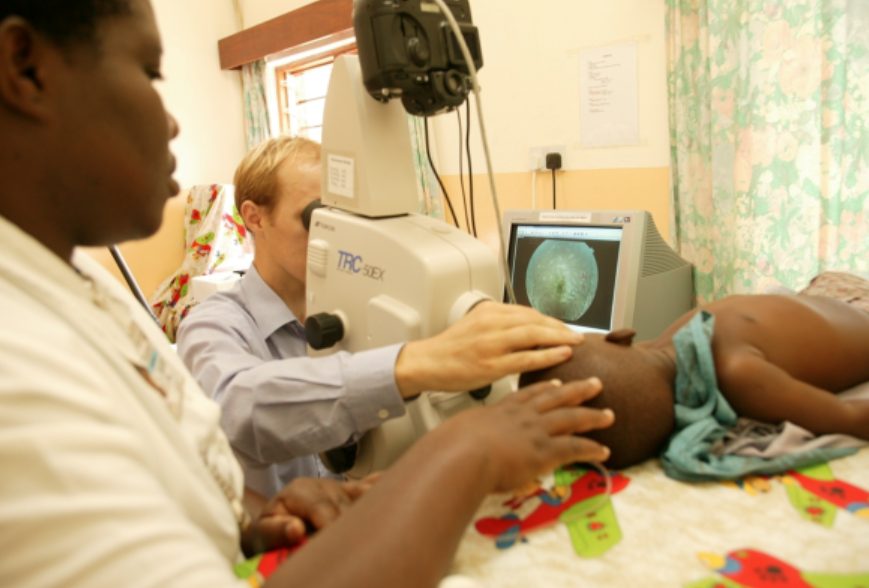
University of Liverpool researchers have worked on many international collaboration projects, and have been awarded a prestigious Wellcome Trust Joint Investigator Award to develop a method of identifying children at risk of dying from cerebral malaria in Africa.
Dr Nicholas Beare and Dr Yalin Zheng from the University of Liverpool’s Department of Eye and Vision Science will combine expertise in clinical research with image analysis, artificial intelligence (AI), optical and electrical engineering to develop an eye scan which will detect brain swelling in these critically ill patients.
The award provides a £1.3m boost for malaria research and will simultaneously fund researchers for three years in Malawi looking after children with cerebral malaria, and researchers in Liverpool developing a low-cost, robust, handheld OCT scanner to identify swelling of the optic nerve, which is connected to the brain; before the work is brought together in the fourth year of the programme.
The project is working with Malawi-Liverpool-Wellcome Clinical Research Programme in Queen Elizabeth Central Hospital in Blantyre, Malawi.

Ground breaking work by a team at the University of Liverpool’s Institute of Translational Medicine (ITM) has led to a change in international guidelines of Plasma Exchange treatment.
A research group led by Senior Lecturer in Pain Medicine Dr Andreas Goebel, based at ITM’s Pain Research Institute, investigated whether an autoimmune mechanism was responsible for causing an intractable chronic pain condition ‘Complex Regional Pain Syndrome’ (CRPS), a chronic systemic disease characterised by severe pain in a limb, swelling, and changes in the skin.
Dr Goebel’s team, in collaboration with teams at the University of Pecs, Hungary and University College London, found that most CRPS patients had unique auto-antibodies that alter sensory nerve function.
The team took these results and treated CRPS patients with plasma exchange treatment, at the Walton Centre NHS Foundation Trust in Liverpool, to reduce autoantibody serum-levels. Some patients responded and had significant, meaningful pain relief for the first time in many years. Other teams around the world have since reproduced these observations.
Based on the team’s work, the American Society for Apharesis (ASFA) has now included CRPS into the list of indications for plasma exchange treatment. ASFA Guidelines are the main reference for Plasma Exchange treatment worldwide.
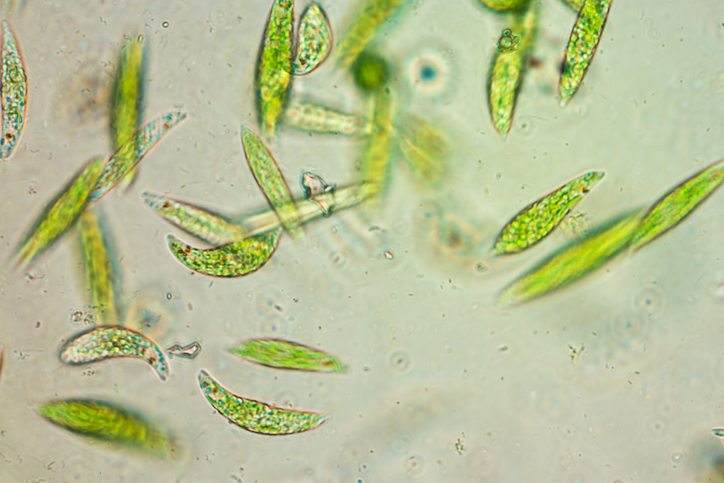
Researchers at the University of Liverpool, Dalhousie University, GEOMAR in Kiel, and the Scripps Institution of Oceanography developed a new mechanistic framework to look at phytoplankton growth in the ocean.
Understanding how these microscopic organisms grow is key to determining how much fish will be available to harvest, and how the climate will further change. However, incomplete knowledge about how phytoplankton respond to change hampers our ability to predict how they will be affected by climate change.
Professor Alessandro Tagliabue, from the University of Liverpool’s Department of Earth, Ocean and Ecological Sciences, said: “You can think of the cell as a mini economy, we need to consider the sum of all internal costs to growth in a given environment to predict the ultimate growth rate.”
“This fundamentally changes the way we look at phytoplankton growth and will lead to better predictions of how much phytoplankton grow in the ocean, and therefore also impact our predictions for fisheries and global climate change. Importantly, this model was able to be uniquely informed by a range of biochemical data usually not accounted for in these kinds of models.”
Ultimately this new understanding can be used to inform on the larger scale models and reduce uncertainty in how warming oceans will affect key ocean ecosystem services like net primary production, carbon sequestration and supporting the marine food supply.

The University of Manchester have also worked on many ground breaking international projects, including a recent collaboration with Harvard’s Wyss Institute for Biologically Inspired Engineering and the Laboratory of Soft Bioelectronic Interfaces at EPFL in Lausanne.
Researchers from these universities collaborated on a pioneering project in bioengineering, producing metal-free, hydrogel electrodes that flex to fit the complex shapes inside the human body.
While the carbon nanotubes used are commercially available, the graphene flake suspension is a process patented by The University of Manchester, currently exploited for printed electronics and biomedical applications. This work demonstrated that you need both materials to achieve optimal electrode performance – carbon nanotubes or graphene alone would not suffice.
Cinzia Casiraghi, Professor of Nanoscience from the NGI and Department of Chemistry at Manchester, said: “This work demonstrates that high-quality graphene dispersions – made in water by a simple process based on a molecule that one can buy from any chemical supply – have strong potential in bioelectronics. We are very interested in exploiting our graphene (and other 2D materials) inks in this field.”
Kostas Kostarelos, Professor of Nanomedicine and leader of the Nanomedicine Lab, added: “This truly collaborative effort between three institutions is a step forward in the development of softer, more adaptable and electroactive devices, where traditional technologies based on bulk and rigid materials cannot be applied to soft tissues such as the brain.”
This research in Manchester was supported by the EPSRC Programme Grant 2D Health and the International Centre-to-Centre grant with Harvard. Other funders include the: National Science Foundation, National Institutes of Health, Wyss Institute for Biologically Inspired Engineering at Harvard University, National Institute of Dental & Craniofacial Research, Eunice Kennedy Shriver National Institute of Child Health & Human Development, Bertarelli Foundation, Wyss Center Geneva, and SNSF Sinergia.

Another team of international experts, led by The University of Manchester, have proposed a series of strategies to halt the degradation of grasslands globally and promote their restoration to meet sustainable development goals.
Their recent study highlights how the world’s grasslands – which cover about 40% of the Earth’s land surface and some 69% of the world’s agricultural land area – are under severe threat from on-going degradation. Yet grasslands are largely ignored in sustainable development agendas. The authors spell out how this poses a major threat to hundreds of millions of people around the world who rely on grasslands for food, fuel, fibre, medicinal products, as well as their multiple cultural values.
The team, which includes experts from major grassland regions of the world, propose a set of strategies to combat grassland degradation and promote restoration. These strategies include increasing recognition of grasslands in global policy, developing standardized indicators of degradation, using scientific innovation for effective restoration at regional and landscape scales, and enhancing knowledge transfer and data sharing on restoration experiences. They argue that implementing these strategies is even more urgent because of ongoing climate change, which is exacerbating the problem.
Lead author Professor Richard Bardgett of The University of Manchester, said: “We hope that our study raises awareness of the plight of global grasslands and the need for urgent action to halt grassland degradation and enhance restoration success, thereby conserving the many benefits that grasslands provide.”

Another recent environmental collaboration saw the University of Manchester and the University of Chile expanding their science and engineering partnership through the launch of a dual award PhD programme.
The idea for this dual PhD degree initiative originated after a joint research project between The University of Manchester and University of Chile was awarded the prestigious Newton Prize in 2018.
The grant was awarded for ‘smart’ ways of restoring electricity supplies following natural disasters. The work has influenced energy policy in Chile and has led to global applications, including countries located around the Pacific Ring of Fire which are exposed to the risk of earthquakes and tsunamis.
The University of Manchester’s President and Vice Chancellor, Dame Nancy Rothwell, said: “At Manchester a cornerstone of our international strategy is partnerships. No single country has a monopoly on talent and it is only through global partnerships that we can address the major challenges to our planet and our society. These partnerships are also essential for producing future generations of skilled global citizens, capable of carrying forward our values and ensuring world peace.”
This new partnership programme will present a unique opportunity for talented researchers to address complex global challenges. Apart from the very attractive proposition this presents to aspiring young researchers, this initiative will consolidate the partnership between our two institutions as academic colleagues drive forward research initiatives that have material impacts in the progress of developing countries.
The PhD programme will be four years in total with two years spent at The University of Chile and two years spent at The University of Manchester. The dual PhD programme was launched at a special online ceremony hosted by the University of Chile on 1 July. Attendees included HMA Louise De Sousa, British Ambassador to Chile, HE David Gallagher, Chilean Ambassador to the UK, and Aisen Etcheverry, Director, Chilean National Agency for Research and Development (ANID).

An international team of scientists from Manchester, Montpellier and Copenhagen recently identified why some endurance athletes experience a heart rhythm disturbance called ‘heart block’.
The University of Manchester-led study found that long-term exercise in retired racehorses – the best available model of the athlete’s heart – and in mice, triggered molecular changes in a part of the heart known as the atrioventricular (or AV) node.
The work is the latest in a series of studies conducted by the team, showing that endurance exercise directly impacts the electrical wiring system of the heart.
Despite well-recognised cardiovascular benefits, sustained endurance exercise in athletes, footballers and other sportspeople can lead to the development of abnormal heart rhythms – known as cardiac arrhythmias, including heart block.
While benign for many people, heart block – also known as AV block – can be a precursor to more serious heart problems.
The team is the first to research the physiology of the notoriously hard-to-study AV node in athletes. The expertise to investigate the structure and function of the AV node has been developed by the Manchester team with longstanding BHF funding.

A rapid attribution study by an international team of climate scientists including Newcastle University researchers, recently found that extreme rainfall events, similar to those that led to floods in Germany, Belgium, the Netherlands and Luxembourg, are between 1.2 and 9 times more likely to happen and are 3-19% heavier because of human-caused climate warming.
The study was conducted by 39 researchers, including Newcastle University’s Professor Hayley Fowler and Dr Steven Chan, as part of the World Weather Attribution group. The team includes scientists from universities and meteorological and hydrological agencies in Belgium, France, Germany, Luxembourg, the Netherlands, the US and the UK.
Hayley Fowler, Professor of Climate Change Impacts at Newcastle University’s School of Engineering, said: “Our state of the art climate models indicate increases in slow moving extreme rainfall events in a future warmer world. This event starkly shows how societies are not resilient to current weather extremes. We must reduce greenhouse gas emissions as quickly as possible, as well as improving emergency warning and management systems and making our infrastructure ‘climate resilient’ – to reduce casualties and costs and make them more able to withstand these extreme flooding events.”

A scientist from Newcastle University will also be part of an international team that will carry out further investigation into the cause of the devastating Uttarakhand flood in India earlier this year.
On February 7th, the Uttarakhand region of India experienced a humanitarian tragedy when a wall of rock and ice collapsed and formed a debris flow down the Ronti Gad, Rishiganga, and Dhauliganga river valleys. The disaster left more than 200 people dead or missing.
This massive slide was caused when a wedge of rock carrying a steep hanging glacier broke off a ridge in the Himalayan Mountain range, leading to the destruction of two hydropower generating facilities, as well as massive loss of life.
Dr Stuart Dunning, Reader in Physical Geography, will join colleagues from the universities of Leeds and Hull, and leading Indian and North American partners, to estimate how quickly millions of cubic metres of new sediment deposited by the flood could be removed or modified by the river.
In the days following the disaster, a team of 53 scientists came together to investigate the cause, scope, and impact of the flood and landslide. They analysed satellite imagery, seismic records, and eyewitness videos to produce computer models of the flow, and their findings have now been published online in the journal Science.
Dr Dunning said: “This was a coming together of more than 50 scientists from around the world, bringing a diverse skillset to study the landslide disaster from both the physical and social viewpoints. A disaster is only a disaster when people, or things we value, are impacted by high mountain hazards such as the tragic event in February – in this case over 200 people and considerable infrastructure.
“This work brought together some highly experienced senior researchers, and showcased the work of the amazing next generation of scientists and cutting edge techniques that allowed so much to be done, in a very short time.
“It also showed the value of genuine partnership with Indian researchers, at a time when ‘parachute’ science is often still the case. Hopefully the quality of collaboration and the resulting science will become a template for researching high-mountain hazard cascades that are thought to becoming ever more frequent as climate warms.”

Newcastle University will be part of the Ocean Renewable Energy Fuel (Ocean-REFuel) programme, targeting the conversion of offshore wind and marine renewable energy to liquid and gaseous fuels.
This innovative £10M research project being led by an N8 university will investigate the potential of harnessing offshore wind and marine renewable energy to produce zero carbon hydrogen and ammonia fuels.
The news came as the UK gets prepared to host COP26, the UN Climate Change Conference, in Glasgow and the consortium includes world-leading research teams from the Universities of Newcastle, Strathclyde, Nottingham, Cardiff and Imperial College London.
The project is funded by the Engineering and Physical Sciences Research Council, industry, and the partner universities, who have also pledged nine linked PhD studentships. The consortium will be working with major industrial OEMs, health and safety executive, regulators, electrolyser system manufacturers, wind turbine manufacturers and utilities companies including: TFP hydrogen, ITM power, National Grid, Siemens-Ganesa and EDF energy.
Dr Mohamed Mamlouk, Senior Lecturer at the School of Engineering, and Keith Scott, Professor of Electrochemical Engineering at Newcastle University will be leading the second work stream of the programme targeting the conversion of renewable wind energy to carbon free fuels, Hydrogen and Ammonia.
Dr Mamlouk said: “Our vision is to harness and convert deep offshore wind and store it in the form of Hydrogen, and other chemical vectors, using sea water by developing new electrolyser technologies that are capable of using sea water directly with minimal pre-treatment. Seawater is an unlimited and safe water resource that can be used to create hydrogen. However, there are several challenges including high materials and energy costs in purifying and desalinating sea water that restrict its use in water electrolysers for hydrogen production.”
Professor Scott added: “Hydrogen is ideal for storing renewable energy over longer durations of days, weeks and months. It will strengthen our energy security and can be used to provide electricity, renewable heat for domestic and industrial use, power long-haul transport, shipping and aviation and in chemical synthesis. Importantly, when converting hydrogen back to electricity or heat only pure water is produced which is an invaluable resource with high demand.”
The five-year collaboration, which involves 28 industrial partners, including BP, Scottish Power the National Grid and ENI – Italy’s former national oil company, will also produce a Blueprint for the first integrated Ocean Renewable Fuel production facility.

Another international study involving Newcastle University, has for the first time found a genetic marker in tumours from patients with high-risk neuroblastoma, a major breakthrough which could lead to a cure for children with cancer who would not have survived the condition.
Professor Deborah Tweddle, from the Newcastle University Centre for Cancer and Honorary Consultant at The Newcastle Hospitals NHS Foundation Trust, led the UK part of the study.
She said: “By identifying ALK as a genetic marker associated with the likelihood of a poorer outcome within the high-risk group of patients, it means we can treat these patients differently from the outset.
“Most excitingly there are new treatments that target the ALK protein itself, used in other cancers that can now be used for patients with high-risk neuroblastoma with ALK gene abnormalities.
“This research is an excellent example of personalised medicine. By treating those patients with an ALK genetic abnormality with an ALK inhibitor we are tailoring the treatment to the patients’ individual tumour type. By combining an ALK inhibitor with the other treatments we currently give for high-risk neuroblastoma we hope to be able to cure more patients with this aggressive childhood cancer.”
Several European countries took part in the study and the UK-arm of the trial has been based at Newcastle University with the test being carried out within the Newcastle Genetics Lab, supported by grants from Solving Kids Cancer and Neuroblastoma UK.
The University of Sheffield have also been collaborating on international studies with real world health impacts.
Scientists from the university, alongside an international team of researchers from the Genetics of Osteoarthritis consortium, discovered new genetic risk factors for the disease and have identified high-value drug targets.
Co-author of the study Professor Mark Wilkinson, from the University of Sheffield’s Healthy Lifespan Institute and Department of Oncology and Metabolism, said: “Osteoarthritis is a disease of the joints and affects over 300 million individuals worldwide. It causes a gradually increasing degeneration of the cartilage on the joint surface, resulting in chronic pain and stiffness.
“Until now, there has been no curative treatment available for osteoarthritis. Our research has pinpointed genes for osteoarthritis which are already the targets of approved drugs, meaning we can reposition these drugs as potential treatments for osteoarthritis.”
This study provides a stepping stone for translating genetic discoveries into osteoarthritis drug development, ultimately helping to improve the lives of patients suffering from osteoarthritis.
This study is the first output of the Genetics of Osteoarthritis consortium, a global collaboration with a focus on progressing our understanding of the genetic underpinning of osteoarthritis and related traits. The consortium aims to bring together all globally available genetic studies of osteoarthritis in order to make new discoveries possible.

An international team of researchers, including scientists from the University of Sheffield, found that the best way to make cities more resilient to the effects of climate change is by combining different types of solutions – technological (e.g. using buildings materials that reflect rather absorb heat), nature based (e.g. use of trees and other vegetation to cool areas) and social solutions (e.g. working with local communities to adapt their behaviour).
Individually, these solutions are unable to address the complexity and scale of climate change adaptation in cities but taking approaches which combine these solutions is the best way to address socio-ecological issues in heavily populated cities as well as increase their resilience to the climate crisis.
Dr Karl Evans, co-author of the paper from the University of Sheffield, said: “Current climate change models predict that the mean maximum temperature in cities globally will continue to increase over the next few decades.
“The effects of climate change are reducing urban liveability and with more than half the world’s population living in cities, we need to find solutions to make them more resilient to the climate crisis.
“Using integrated solutions that often incorporate nature based solutions simultaneously help to tackle society’s two greatest challenges – climate change and biodiversity loss.”

University of Sheffield researchers also contributed to a recent report on the increase of online violence against women journalists. The report revealed how these attacks are linked to disinformation, intersectional discrimination, and populist politics, showing how online attacks have real-life impacts and how social media and news organisations are still struggling to respond effectively.
A team of 23 international researchers from 16 countries contributed to the study, a global survey of 901 journalists from 125 countries.
This included contributions from Dr Diana Maynard and Professor Kalina Bontcheva from the University of Sheffield’s Department of Computer Science and Centre for Freedom of the Media (CFOM), as well as from Professor Jackie Harrison and Dr Sara Torsner from the University of Sheffield’s CFOM.

Recent research from the University of Sheffield has also found obesity may exacerbate the effects of Alzheimer’s disease.
Their pioneering multimodal neuroimaging study revealed obesity may contribute toward neural tissue vulnerability, whilst maintaining a healthy weight in mild Alzheimer’s disease dementia could help to preserve brain structure.
Researchers from the University of Sheffield and the University of Eastern Finland examined MRI brain scans from 47 patients clinically diagnosed with mild Alzheimer’s disease dementia, 68 patients with mild cognitive impairment, and 57 cognitively healthy individuals. The international team compared multiple brain images and measured differences in local concentrations of brain tissues to assess grey matter volume – which degenerates during the onset of Alzheimer’s – white matter integrity, cerebral blood flow and obesity.
The study also found that maintaining a healthy weight in mild Alzheimer’s disease dementia could help preserve brain structure in the presence of age and disease-related weight loss.
The findings, published in The Journal of Alzheimer’s Disease Reports, also highlight the impact being overweight in mid-life could have on brain health in older age.
Lead author of the study, Professor Annalena Venneri from the University of Sheffield’s Neuroscience Institute and NIHR Sheffield Biomedical Research Centre, said: “More than 50 million people are thought to be living with Alzheimer’s disease and despite decades of ground breaking studies and a huge global research effort we still don’t have a cure for this cruel disease.
“Prevention plays such an important role in the fight against the disease. It is important to stress this study does not show that obesity causes Alzheimer’s, but what it does show is that being overweight is an additional burden on brain health and it may exacerbate the disease.”

The University of York have also recently collaborated internationally on brain health research, with a recent study showing how the brain retrieves facts and personal experiences may help people with memory disorders.
Scientists from the University of York say their findings may have relevance to memory disorders, including dementia, where problems remembering relevant information can impact on the daily life of patients.
Senior author Professor Elizabeth Jefferies from the Department of Psychology, University of York, said: “In order to generate appropriate thoughts and behaviours, we have to draw on our memory stores in a highly flexible way. This new study highlights control processes within the brain that allow us to focus on unusual aspects of the meanings of words and to retrieve weakly encoded personal experiences. This control over memory allows us to be creative and to adapt as our goals or circumstances change.”
The recent study suggests that a shared set of brain regions play an important role in controlling the successful retrieval of weak memories. Researchers say the findings may also have important implications for the development of a new generation of artificial intelligence systems, which use long-term memory in solving computational problems.
The research was supported by the European Research Council and the National Natural Science Foundation of China.

Another international team of researchers, led by biologists and chemists from the University of York, identified a new enzyme that infects plants – paving the way for potential disease prevention, showing that disabling this enzyme effectively stops plant disease in its tracks.
The researchers discovered a new class of enzymes that attack pectin called LPMOs. The team also showed that disabling the gene that encodes this enzyme rendered the pathogen incapable of infecting the host.
By discovering these previously unexplored ways in which crop pathogens break through plant cell walls, the scientists have opened up opportunities for developing effective disease control technologies.
Lead author on the report, Dr Federico Sabbadin, from the Biology Department’s Centre for Novel Agricultural Products (CNAP), at the University of York said: “These new enzymes appear to be important in all plant pathogenic oomycetes, and this discovery opens the way for potentially powerful strategies in crop protection”.
Professor Simon McQueen-Mason, also from CNAP, remarked that the work was “the result of interdisciplinary collaborations between biologists and chemists at York along with plant pathologists at the James Hutton Institute, and genomicists at CNRS, with invaluable molecular insights from Professor Neil Bruce (CNAP) and Professors Gideon Davies and Paul Walton in the Department of Chemistry at York.”
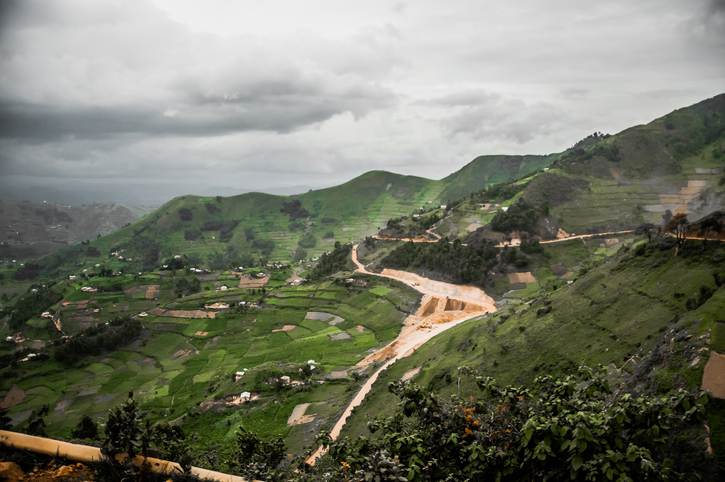
Also on the environmental front, scientists from the University of York studying tropical forests in Africa’s mountains were surprised to uncover how much carbon they store, and how fast some of these forests are being cleared.
The international team’s study found that intact tropical mountain (or montane) forests in Africa store around 150 tonnes of carbon per hectare. This means that keeping a hectare of forest standing saves CO2 emissions equivalent to powering 100 homes with electricity for one year.
The study found that African mountain forests store more carbon per unit area than the Amazon rainforest and are similar in structure to lowland forests in Africa. Existing guidelines for African mountain forests – which assume 89 tonnes of carbon per hectare – greatly underestimate their role in global climate regulation.
The international team also investigated how much tropical mountain forest had been lost from the African continent in the past 20 years. They found that 0.8 million hectares have been lost, mostly in the Democratic Republic of the Congo, Uganda and Ethiopia, emitting over 450 million tonnes of CO2 into the atmosphere. If current deforestation rates continue, a further 0.5 million hectares of these forests would be lost by 2030.
Lead author Dr Aida Cuni-Sanchez, from the University of York’s Department of Environment and Geography and at Norwegian University of Life Sciences, said: “The results are surprising because the climate in mountains would be expected to lead to low carbon forests.
“The lower temperatures of mountains and the long periods they are covered by clouds should slow tree growth, while strong winds and steep unstable slopes might limit how big trees can get before they fall over and die.
“But unlike other continents, in Africa we found the same carbon store per unit area in lowland and mountain forests. Contrary to what we expected, large trees remain abundant in mountain forests, and these large trees (defined as having diameters over 70 cm) store a lot of carbon.”
Co-author Dr Phil Platts, from York’s Department of Environment and Geography and the IUCN’s Climate Change Specialist Group, said: “About five per cent of Africa’s tropical mountain forests have been cleared since 2000, and in some countries the rate exceeds 20 per cent. Besides their importance for climate regulation, these forests are habitats for many rare and endangered species, and they provide very important water services to millions of people downstream”.
Co-author Dr Gerard Imani, at the Department of Biology, Université Oficielle de Bukavu in DR Congo, added: “Carbon finance mechanisms could help improve conservation interventions on the ground – even within protected areas, deforestation, forest degradation and defaunation remain a challenge.”
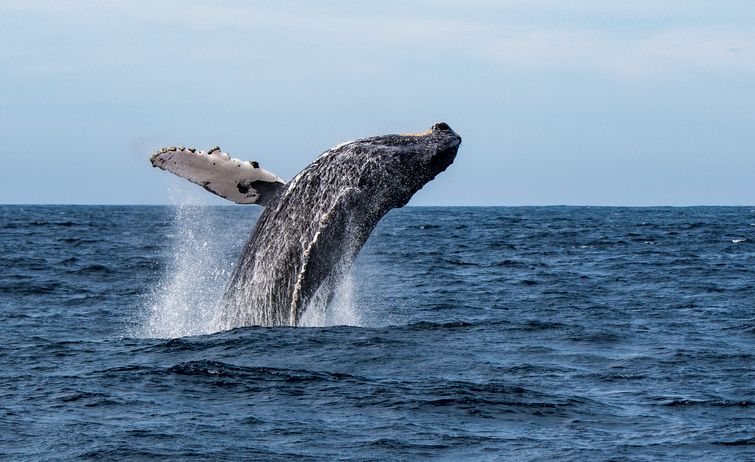
Another study involving scientists at the University of York, found that depleted marine life across the world’s oceans could recover to healthy levels by 2050 if urgent action is taken.
The study used evidence from successful conservation interventions around the globe to recommend crucial steps the international community can take to restore the abundance of marine life.
Successful conservation projects highlighted by the research included the recent surge in numbers of humpback whales following the end of commercial hunting in the Southwest Atlantic which brought the species to the edge of extinction.
The researchers found that while human activity has often had a devastating impact on the marine environment, there is evidence that sea life is remarkably resilient. While there were steep losses in marine biodiversity throughout the 20th Century, population losses have slowed and, in some places, bounced back in the first two decades of the 21st Century.
Co-author of the study, Professor Callum Roberts from the Department of Environment and Geography at the University of York, said: “The success of many marine conservation projects in recent years illustrates how we can make a real difference to life in our oceans if we apply the lessons learnt from them at scale and with urgency.
“Over-fishing and climate change are tightening their grip, but there is hope in the science of restoration. We now have the skills and expertise to be able to restore vital marine habitats such as oyster reefs, mangrove swamps and salt marshes – which keep our seas clean, our coasts protected and provide food to support entire ecosystems.”
“Science gives us reason to be optimistic about the future of our oceans, but we are not currently doing enough in the UK or globally.”

Another important and timely international collaboration saw the University of York and Leeds collaborate with the Hilvert Laboratory at the ETH Zurich, to shed new light on the early stages of viral evolution, uncovering the mysteries of how viruses evolve.
The team studied the structure, assembly and evolution of a ‘container’ composed of a bacterial enzyme. They revealed that packaging of the genetic cargo in these containers becomes more efficient during the later stages of evolution. They show that this is because the genome inside evolves hallmarks of a mechanism widely used by natural viruses, including Covid-19, to regulate their assembly.
That mechanism was a joint discovery of the York and Leeds teams. Professor Reidun Twarock, from the University of York’s Departments of Mathematics and Biology, and the York Cross-disciplinary Centre for Systems Analysis, said: “Using a novel interdisciplinary technique developed in our Wellcome Trust-funded team in Leeds and York, we were able to demonstrate that this artificial system evolved the molecular hallmarks of a ‘virus assembly mechanism’, enabling efficient packaging of its genetic cargo.”
Professor Peter Stockley from the University of Leeds’ Astbury Centre for Structural Molecular Biology, said: “What’s remarkable is this artificial virus-like particle evolves to be more efficient in packaging RNA.
“Our collaboration shows that following the evolutionary steps the encapsidated messenger RNAs incorporate more Packaging Signals than the starting RNAs.
“In other words, the phenomenon we have been working on in natural viruses “evolves” in an artificial particle, and the results in this paper therefore describe a process that may have occurred in the early evolution of viruses. This understanding enables us to exploit these containers as delivery vehicles for gene therapeutic purposes.”
The international studies and collaborative research projects outlined above are only the tip of the iceberg when it comes to the work delivered by the N8 universities. They have a truly worldwide reach, collaborating strongly with international universities, businesses, organisations and scientists across the globe, across a wide variety of research themes. The long-term global benefits of these collaborations cannot be understated.